AP AH Content Area 9
1/34
Earn XP
Name | Mastery | Learn | Test | Matching | Spaced |
|---|
No study sessions yet.
35 Terms
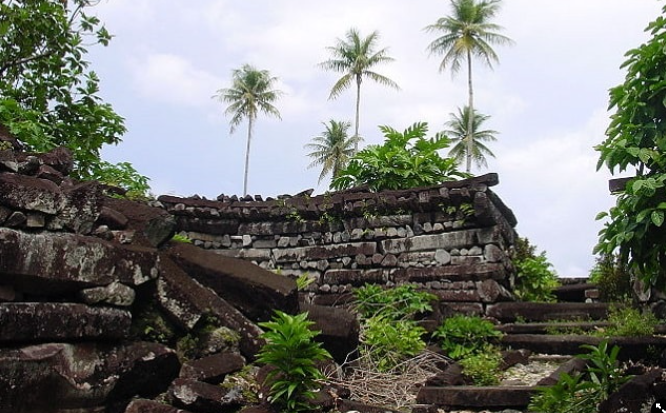
Nan Madol
Saudeleur Dynasty
Pohnpei, Micronesia
700 ce
Basalt Boulders and Prismatic Columns
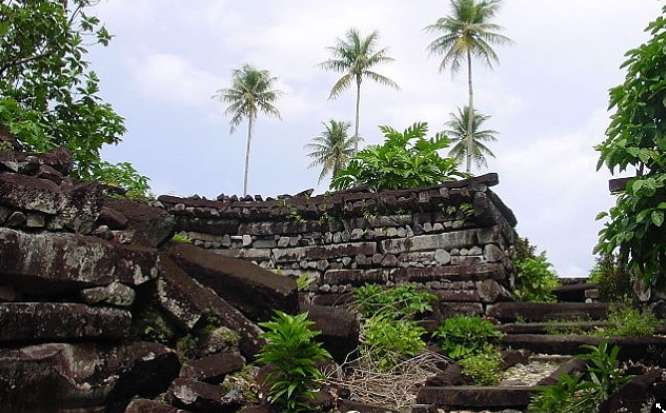
Visual
Megalithic
92 small artificial islands connected by canals
Built out into the water so canoes could go through
No mortar used to stack rocks
Tall and thick walls to protect from waves
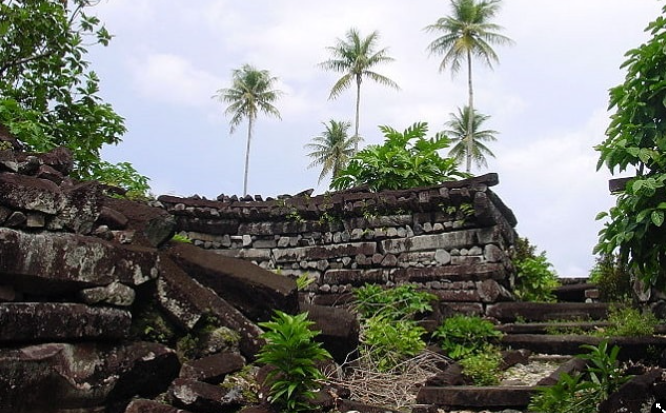
Contextual
City built to separate upper class from lower class
Only for the elite
Built by people under the command of dictator
Function: Ceremonial and Political
Theory: Magic used to lift rocks/Great birds or giants were the creators
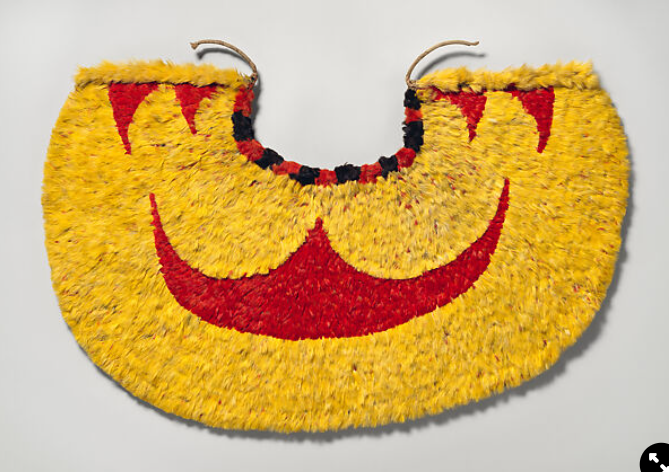
‘Ahu ‘Ula
Hawaii (Polynesia)
18th century
Feather and Fiber
Mana
inner life force coming from the gods
Tapu
protection of mana (wrapping/covering)
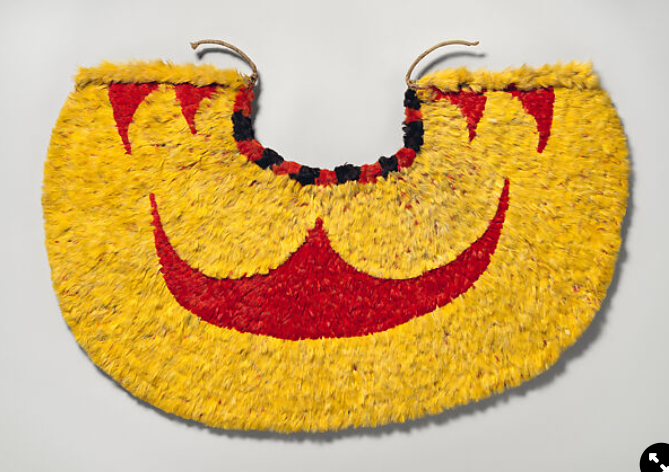
Visual
Made of 500,000 bird feathers - some birds had only seven usable feathers
Feathers would only be plucked (to not anger gods)
Red- gods and chiefs
Yellow- very rare= valuable
Geometric and curvilinear patterns
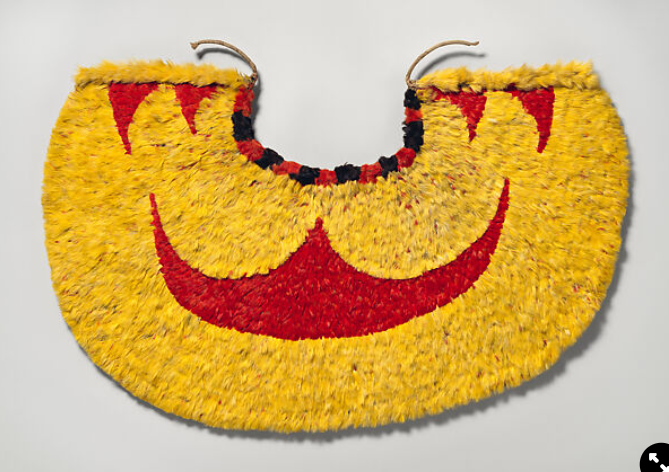
Contextual
Symbol of power and social standing
Worn by chiefs to ceremonies and battles (protection)
Bigger garment= higher rank
Artist chants while making it to “summon” power
Wearer’s history used to determine pattern
Feathers gathered by women, fiber by men
Often given as a gift to respected people

Hiapo (Tapa)
Niue
1900
Tapa or Bark Cloth, Freehand Painting

Visual
Fine lines, geometric designs, getting smaller motifs
Edges- representation of native plants
Bark cloth pounded flat, stuck together with plant pastes- performed only by women
Designs- pounded with carved beating tool/rubbing over stencil (unique to maker)
Certain designs- for high ranked people
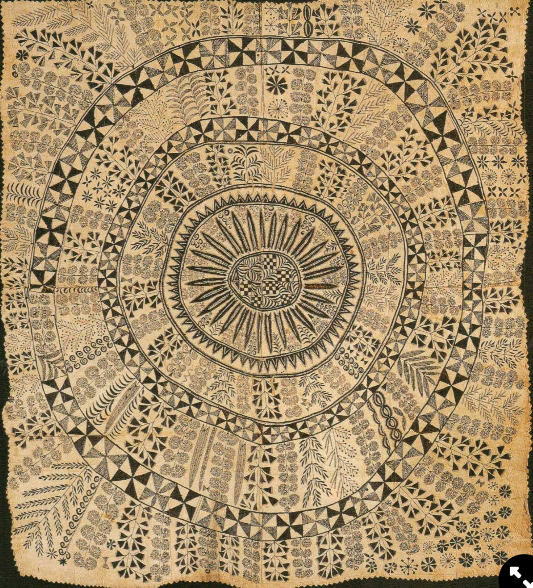
Contextual
Worn in important stages of lives
Given as gift to places traveled to
Function: clothing, bedding, wall hangings
Displayed on special occasions (spiritual/religious)
Idea: people wrapped in tapa to preserve mana
Could function as currency (no tapa=poor)
Men- hard material; Women- soft material
Seen as women’s arts and wealth

Staff God
Cook Islands
19th century
Wood, Tapa, Fiber, and Feathers

Visual
Wood core (made by men) wrapped in barkcloth with geometrical patterns (made by women)
Elongated body topped by carved head (1/3 of wood carving; 1 to 3 proportion)
Line of smaller figures- below head (spine like)- alternate between women in childbirth (frontal) and men ancestors (profile)
Large head- male deity (maybe Tangaroa- fertility god)
Red feathers, pearls, and wrapping- symbol of contained mana
Phallus- Tangaroa responsible for creation (removed by missionaries)

Contextual
Function: not sure
Meant to be “soul of god”
Potentially used to worship Tangaroa
Celebrates life before colonialism (non-Christian)
Symbolizes fertility and sexuality
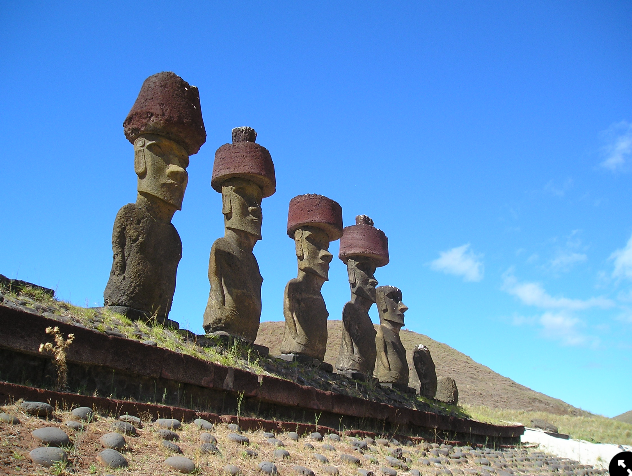
Moai on Platform (Ahu)
Rapa Nui
1600 ce
Volcanic Tuff Figures on Basalt Base
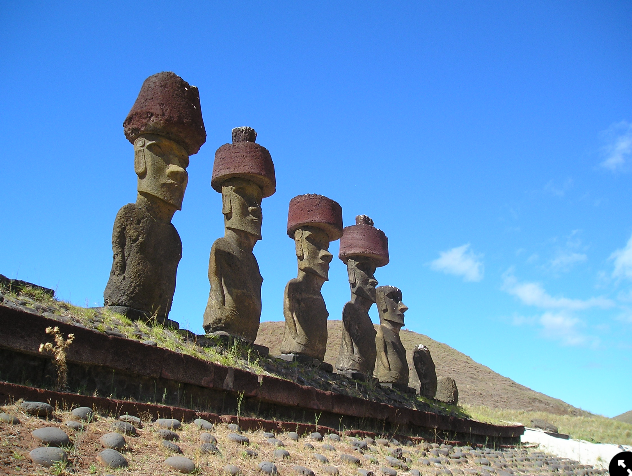
Visual
Large heads, prominent foreheads, and large broad noses and ears
Generalized features
Arms at the sides that reach straight down
Statues elevated on platform (stone mixed with cremation ashes)- platform just as sacred
Some have “topknots”- hairstyle (depict ancestral chiefs/importance)
Carved eye sockets- white inserted during ceremonies to “awaken power”
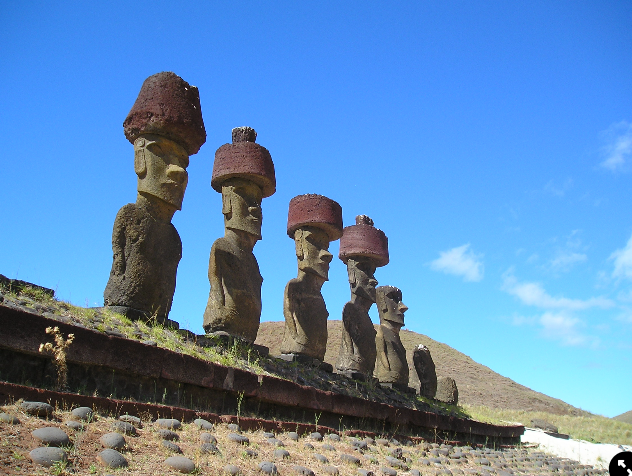
Contextual
Theory: mark burial/ritual sites
Guardian spirits- most face inland to watch people
Tribute/way of connecting with ancestors
Method of moving statues: “walked” using ropes to push and pull
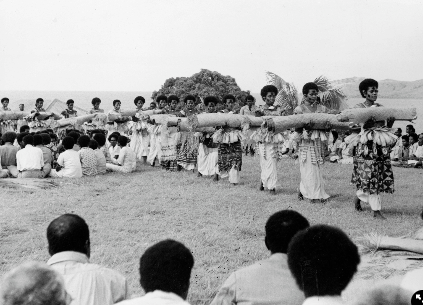
Presentation of Fijian Mats and Tapa Cloths to Queen Elizabeth II
Fiji, Polynesia
1953 ce
Multimedia Performance and Photographic Documentation
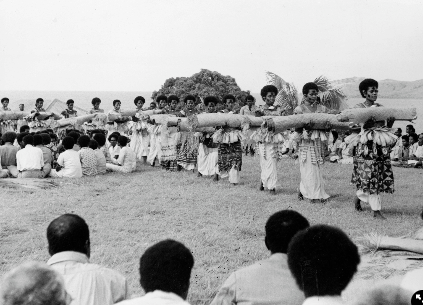
Visual
Fijian mats- dried and softened plant leaves woven into patterns (being presented)
Barkcloth- beat inner bark of tree glued together (worn by women)
Simpler mat design = more meaningful function
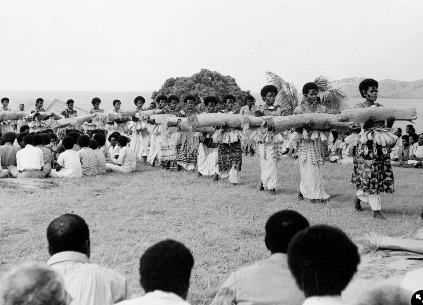
Contextual
Function: To honor and welcome Queen Elizabeth II
Presented as gifts in important ceremonies
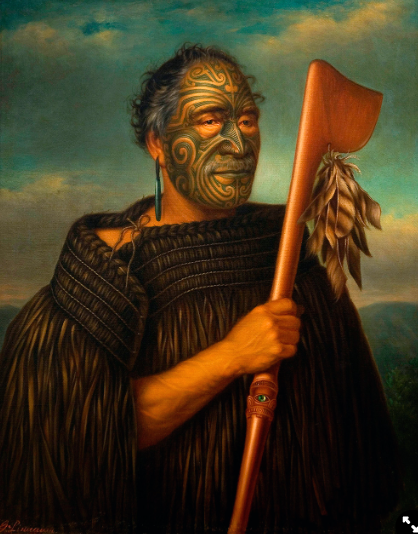
Tamati Waka Nene
Gottfried Lindauer
1890
Oil on canvas

Visual
Subject: Man centered in portrait holding weapon
Cloak covered in feathers and earring- treasure
Green tattoos (moko) cover his entire face
Background- atmospheric perspective
Clear forms- natural representation of human anatomy and clothing
Shows Tamati Waka Nene- chief who helped maintain peace with the British

Contextual
Function: preserving person in history and physically embody him
Culture- show respect to dead by hanging their photo
Attire shows status
Gottfried Lindauer- moved to New Zealand and started painting Maori leaders
Technique (Renaissance naturalism)- oil on canvas, atmospheric perspective
Painted 3 years after Tamati Waka Nene died
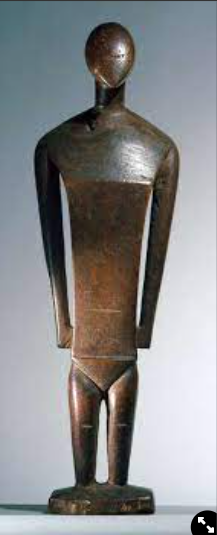
Female deity
Nukuoro, Micronesia
19th century
Wood
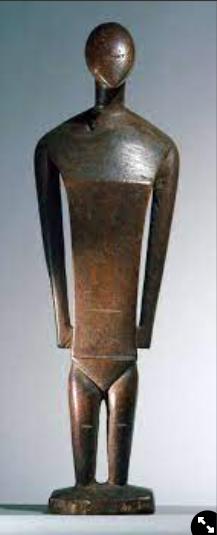
Visual
Oval head, column like neck, flat buttocks
Lack of face detail and flexed legs- provide “blank canvas” ready to take on deity’s vital force
Geometric abstract sculpture- simplified anatomy
Proportions- long torso, wide shoulders, short legs
Vertical, freestanding, symmetrical sculpture
Nails- allowed clothing to be added
Triangular pelvis- mandatory tattoo for elite women
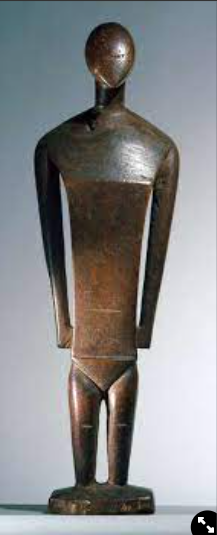
Contextual
Religious purposes
Represents specific deity or ancestor (related to diff families)
Used for special annual harvest ritual
Belief: spirit resides inside figure during festival (decorated)
Influenced European arts
Worshipped along with primary figure
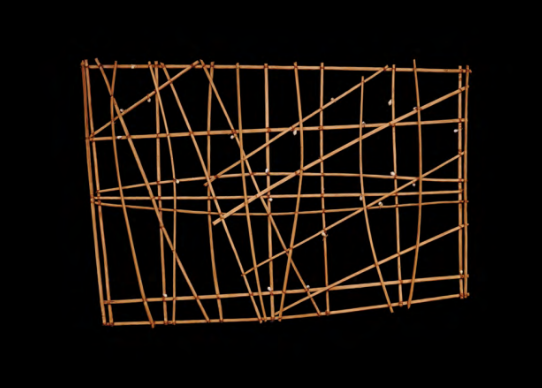
Navigation Chart
Marshall Islands, Microneisa
19th century
Wood and fiber
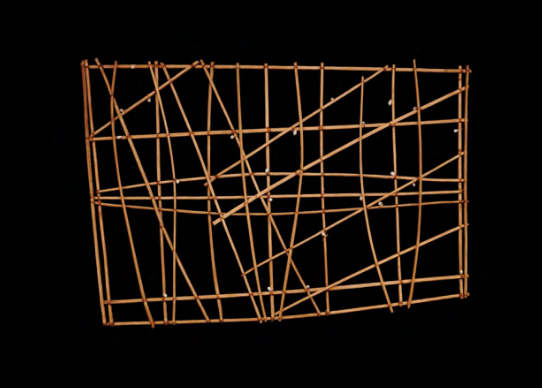
Visual
Made of wood= light, waterproof, and buoyant
Horizontal and vertical sticks- support chart
Diagonal sticks- water and wind currents
Shells- islands
Coconut fiber- ties sticks
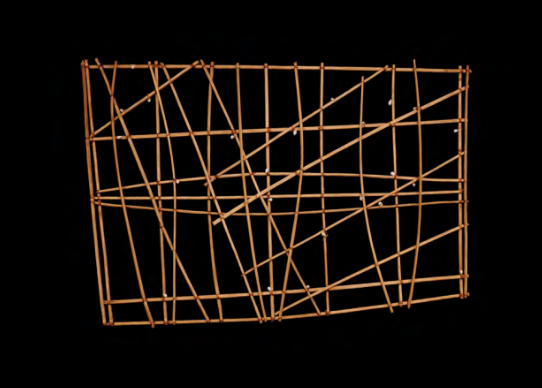
Contextual
Mnemonic device- memorized prior to a voyage
Function: map that navigates seas and islands
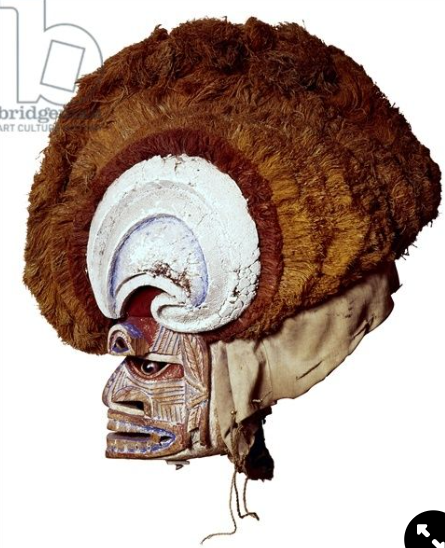
Malagan display and mask
Papua New Guinea
20th century ce
Wood, pigment, fiber, and shell

Visual
Symmetrical sculpture with asymmetrical designs
Diff colors on left and right- creates contrast (dancers have diff appearance when they turn)
Simple, geometric, repetitive motifs- unique to deceased they’re dedicated to (strength and honor)
Headdress- curvilinear
Abstract anthropomorphic face with stylized features
Red, yellow black= war, magic, violence
Base depicted as rock cod- changes from male to female over time

Contextual
Function: used at funeral sites (farewell to dead and celebration of their achievements)
Represents person’s soul/spirit (not a portrait)
Belief: soul enters sculpture (burned or left to rot after it leaves= rebirth)
Ownership similar to copyright= unique art
Expensive and requires a lot of resources
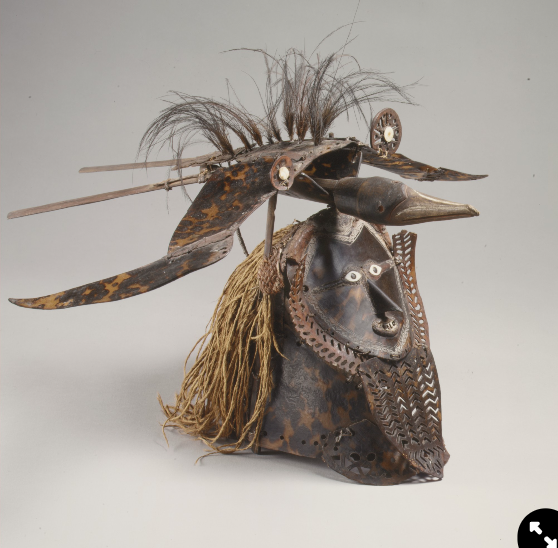
Buk Mask
Torres Strait
19th century ce
Turtle shell, wood, fiber, feathers, and shell
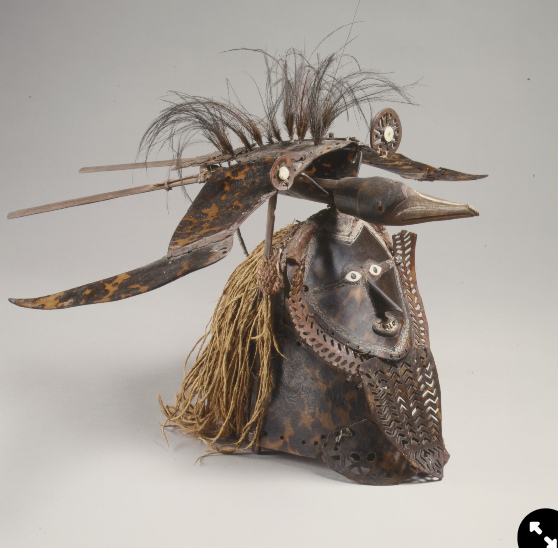
Visual
Three parts: bird, human face, and feathers (stitched together pieces)
Raffia acts like hair (adds texture)
Turtle shell masks unique to this region
Bird theory- mythological creature connected to certain family (animal they don’t hunt or see as special?)
Circular pieces- represent ornaments worn on occasions
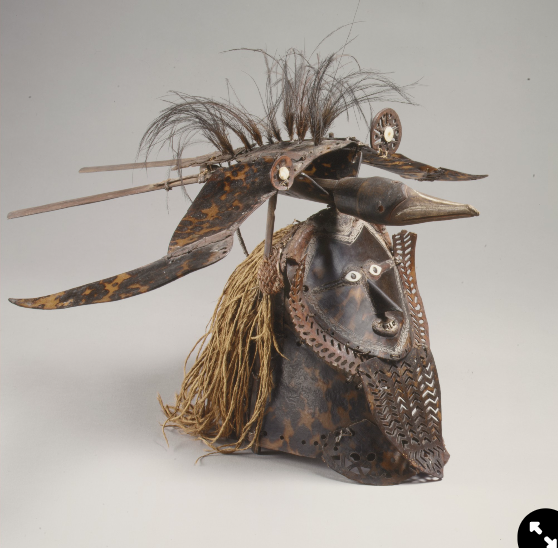
Contextual
Function: Used as a part of a costume made of grass for funerals, male initiation rites, and to encourage good harvests or hunts
Connection to spiritual world
Theory: face of a hero/ancestor